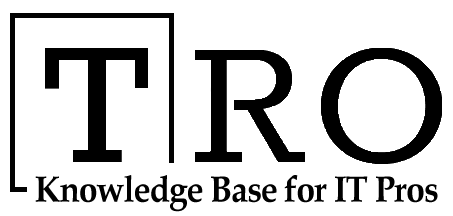AI is Helping Fight Against COVID-19 with New Range of Technologies
Introduction
COVID-19 outbreak has affected more than 100 countries across all continents. To, tackle the outbreaks scientists are working around the clock on new treatments and techniques that might help to contain the virus. This has led to an increase in demand and pressure for the development of diagnoses and treatments at the international level. AI is opening up new possibilities by helping researchers, scientists, doctors, and other workers. After the first outbreak in China, the countries are taking advanced steps to utilize AI and data science technologies to fight the pandemic.
The rising dependence of AI has increased the funding for startups that are exploring innovations for clinicians, laboratories, and government entities. Below are the different ways AI and other technologies are being used to fight COVID-19:
Contents
1. Identify, track and forecast outbreaks
Identification of a virus is the first step toward the fight against any outbreak. AI can detect outbreaks such as COVID-19 by analyzing news reports and government documents. Canadian startup BlueDot warned about the risk of infectious disease using AI several days before the justifies for Disease Control and Prevention or the World Health Organization. They anticipated the impact of disease through diverse datasets such as billions of flight itineraries, health system capacity, real-time climate conditions, and animal and insect populations. As AI becomes more and more smart future predictions can help the government take action even before the outbreaks start.
2. Virus diagnosis with AI
To accurately detect and diagnose COVID-19, imaging departments in healthcare facilities are being overworked. AI can help reduce the workload and improves CT diagnosis speed as reducing the minutes decreases the chance of cross-contamination in healthcare facilities. Infravision has launched an AI-based solution to help healthcare workers detect and monitor the virus efficiently.
These new tools use deep-learning analytics along with a graphical user interface to help facilities with limited resources screen out suspected patients immediately for treatment. The company has managed the process efficiently; abnormal and severe case analysis, assisting with pneumonia marking, medical resources, patient triage, and treatment assessments.
3. Medical supply
Drones are one of the safest and fastest ways to get medical supplies during outbreaks. Today, they are being used for thermal imaging, patrol public spaces, and track non-compliance to quarantine mandates. Japanese company Terra Drone is aerial vehicle to transport medical samples between People’s Hospital and Xinchang County’s disease control justify. They are also transporting quarantine material with minimal risk.
4. Sterilization, cleaning, and other tasks
As the virus is spread through contact it has limited contact by encouraging social distancing. In this case, robots are being deployed for tasks such as cleaning, sterilizing, and food and medicine delivery to help reduce contact among humans. Blue Ocean Robotics is utilizing its UVD robots to disinfect hospitals and other healthcare facilities. The robot can help prevent and reduce the spread of the virus by killing them by using UV light to autonomously kill bacteria and viruses.
5. Protection of healthcare workers
The most important for health workers are protecting themselves while treating patients with infectious virus. Israeli startup Sonovia has stepped up to arm the medical systems with textiles which is anti-bacterial and anti-pathogen. The fabric relies on metal-oxide nanoparticles to protect doctors and other healthcare workers from harmful viruses.
6. Identification of infected individuals
Facial recognition technology and temperature detection software can help identify people having fever and virus-like symptoms. A new development by the Chinese government called a monitoring system uses big data to identify and assess the risk of each individual. It detects potential exposure to the virus in these individuals based on their travel history and times spend in virus hotspots. Afterward, the suspected citizens can access the information via WeChat or Alipay to know if they should be allowed in public or quarantined.
7. Share information
Since the outbreak health facilities are dealing with a larger number of people for consultation. Chatbots are helping many governmental and private sites to identify people affected by coronavirus from individuals with other symptoms. Previously, chatbots were extensively used as a communication tool for service providers in different industries such as travel and tourism. WeChat which is operated by Tencent is offering people access to free online health consultation services by using these bots.
8. Increase the process of vaccines development
Cloud computing resources and supercomputers can run calculations and model solutions faster than the human mind or any standard computer processing. Hence they are being used by researchers to increase the pace of vaccine development.
9. Process healthcare claims
The insurance industry is dealing with the surging number of patients claiming insurance. Ant Financial is offering a blockchain platform to insurance companies to decrease the claims processing time while simultaneously decreasing reducing face-to-face interaction between patients and hospital staff.
10. Drug Development
Companies are experiencing immense pressure for the development of a new vaccines. To speed up the process, Google’s DeepMind division is using a new set of algorithms and computing power to understand the basic make-up of proteins. This is helping understand the virus and its mechanism to develop drugs and other treatments. BenavolentAI is also using its AI-powered product toward the virus. These AI-powered systems help the company, with predictive capabilities of existing drugs that might be useful just weeks after the outbreak.
The development and utilization of such technologies at the global level have both major reforms in the traditional methods of healthcare sectors. These technologies are also helping companies and businesses across the world to cope with the changing times while giving them an opportunity to transform themselves.

